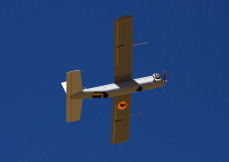India’s armed forces are set to become highly reliant on unmanned aerial systems by 2030, according to a scientist with the country’s Defence Research and Development (DRDO).
 |
 |
| Here you can find more information about: |
‘By 2030, the percentage of the manned fleet will have been reduced significantly,’ said Dr Vijay Kumar Saraswat, scientific advisor and secretary of the DRDO, speaking at the Aerospace Forum Sweden being held at Malmen AB, near Linkoping on 31 May.
‘But it depends very much on how smart and intelligent we can make these [unmanned] systems,’ added Saraswat.
In his presentation, Saraswat highlighted a large number of the technologies currently being developed by the DRDO.
Currently the organisation is flying the Nishant UAV, a catapult launched, parachute recovered low-altitude surveillance system, as well as the Rustom 1 MALE system. Now the DRDO is working on the Rustom 2, this aircraft will have a 5km altitude and an endurance of 24 hours.
As well as its numerous programmes surrounding manned aircraft, the DRDO is working on UAV technologies required for the challenging UAV requirements demanded by the Indian armed forces including high endurance and loiter capabilities, icing and de-icing, sense and avoid and the ability to take-off from runways at 11,000 ft.
Aero-structures technology is also receiving attention such as bio-mimetic materials for nano air vehicles as well as materials that will self-heal or allow changes in shape in flight.
Among the requirements for the Indian forces is a ‘bomber UAV’ and a ‘fighter UAV.’ In the presentation shown by Saraswat was a flying-wing dubbed the Independent Unmanned Surveillance Air Vehicle (IUSAV), which featured a design similar to the X‑45 and X‑47 currently under test in the US.
The IUSAV is likely to use some of the low-observable techniques currently under development by the DRDO for its Advanced Medium Combat Aircraft (AMCA) and the country’s fifth-generation fighter programme in development in conjunction with Russia.
These technologies include radar absorbent paints, conformal antennas, low engine exhaust temperatures and serpentine ducts for airflow into the engine, planned to be a derivative of the Kaveri engine currently under test for the Light Combat Aircraft. The IUSUV is likely to enter service over in 10 to 15 years’ time.
The IUSAV would also serve alongside a solar-powered HALE platform for surveillance.
Source:
www.DefenceNews.in
The website is dedicated to give a complete, swift and day-to-day coverage of all the latest happenings in the world of Indian Defence and Aerospace in an accurate, objective, credible and comprehensive manner.

 von
von 